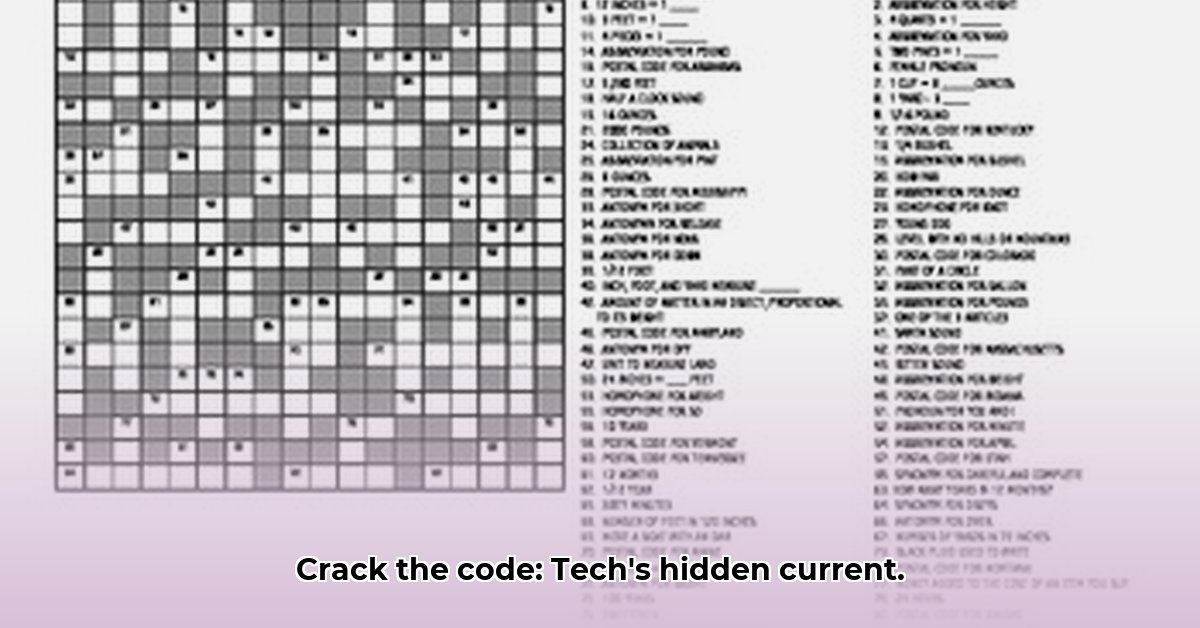
Current Measurement: A Deep Dive into Technology and Trends
Ever wondered how we precisely quantify electricity's flow? The answer lies in current measurers—essential tools underpinning modern technology, from minuscule phone components to vast city-powering grids. This article explores their function, advancements, and future directions, offering insights for students, engineers, and anyone curious about unseen forces powering our world. For more on precise measurements, see this helpful resource: Crossword Clue Differences.
Ammeters: The Workhorses of Electrical Measurement
The most common "current measurer" is the ammeter, a device quantifying electric current in a circuit. Ammeters range from simple analog needles on scales to sophisticated digital meters providing high accuracy and extensive data. The choice depends on the application—a basic multimeter for home use versus a precision lab instrument. But ammeters represent just a fraction of the measurement technology landscape.
Beyond Amps: A Broader Perspective
Current measurement extends beyond electricity. We measure temperature, pressure, flow rates, vibrations—requiring specialized instruments with unique characteristics and limitations. A weather station, for example, employs various sensors to comprehensively assess atmospheric conditions. The unifying factor: the unwavering pursuit of accuracy crucial across countless industries.
Technological Advancements: Miniaturization and Digitalization
A defining trend is miniaturization, with sensors shrinking to incredible sizes—embeddable directly into systems for real-time data. Consider tiny car engine sensors constantly monitoring fuel injection, temperature, and wirelessly transmitting data to your phone, enabling proactive maintenance.
The digital revolution is equally transformative, replacing analog counterparts with digital meters offering improved precision, data storage, and seamless communication with other devices. This shift simplifies data analysis and facilitates system integration.
Challenges and Limitations: Standardization, Big Data, and Accuracy
Despite advancements, precise measurement presents challenges. Standardization is a hurdle—ensuring consistent results across different devices measuring the same quantity. The sheer volume of data generated—big data—requires intelligent analysis tools and skilled data scientists for interpretation. Ensuring data reliability and accuracy is paramount.
Data-backed rhetorical question: How can we effectively manage and analyze the ever-increasing volume of measurement data generated by advanced technologies?
Future Trends: The Impact of IoT, AI, and Quantum Sensing
The Internet of Things (IoT) and Artificial Intelligence (AI) are poised to significantly alter measurement. IoT's interconnected sensor network generates vast data streams, monitoring everything from traffic to environmental conditions. AI's analytical capabilities automate data interpretation, predict potential problems, and optimize processes. Consider a smart factory using IoT and AI to preemptively address equipment failures, minimizing downtime.
Beyond this, quantum sensing technologies promise unprecedented accuracy, revolutionizing fields from medical imaging to materials science. While still nascent, the potential is immense.
Comparing Measurement Instrument Accuracies: A Systematic Approach
Comparing instrument accuracies requires a standardized approach. Factors like environmental conditions and inherent instrument uncertainty significantly influence results.
Quantifiable fact: Temperature fluctuations can introduce significant errors in measurement readings, highlighting the need for environmental control during comparisons.
Steps for Accurate Comparison
- Control the Environment: Maintain stable temperature and minimize air currents.
- Establish Baseline Accuracy: Calibrate instruments meticulously.
- Repeat Measurements: Perform multiple measurements of the same quantity.
- Quantify Uncertainty: Document manufacturer-specified measurement uncertainty.
- Range Testing: Test instruments across their entire operating range.
- Statistical Analysis: Use statistical methods (standard deviations, mean values) to analyze data objectively.
- Document Everything: Record all environmental conditions, calibration details, and measurement data.
Expert Quote: "Accurate comparison of measurement instruments demands rigorous methodology, encompassing environmental controls, careful calibration, repeated measurements, and detailed data analysis," states Dr. Anya Sharma, Lead Researcher at the National Institute of Standards and Technology (NIST).
Conclusion: The Ongoing Pursuit of Precision
The quest for accurate, efficient measurement continues to drive innovation, shaping our technological landscape. From simple ammeters to advanced quantum sensors, the journey toward precise measurement remains a dynamic, challenging, and crucial endeavor. The advancements in this field will continue to shape the future of countless technologies and industries.